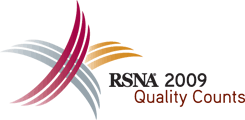
Abstract Archives of the RSNA, 2009
SSK17-09
Is the Greulich and Pyle Atlas of Skeletal Development Still Valid for Children in Israel Today?
Scientific Papers
Presented on December 2, 2009
Presented as part of SSK17: Pediatrics (Musculoskeletal)
Aviva Alony Ben-Shlush MD, Presenter: Nothing to Disclose
Ilia Novikov, Abstract Co-Author: Nothing to Disclose
Lisa Ruth Raviv-Zilka MD, Abstract Co-Author: Nothing to Disclose
Jeffrey M. Jacobson, Abstract Co-Author: Nothing to Disclose
Iris Eshed, Abstract Co-Author: Nothing to Disclose
Michalle Soudack MD, Abstract Co-Author: Nothing to Disclose
To determine whether the Greulich and Pyle Atlas, first published in 1950, is relevant for the Israeli pediatric population today, and estimate the correction needed for Israeli children when determining bone age from the Atlas.
All left hand radiographs of children obtained for trauma since 2001 were identified through the hospital's computerized archives. 254 radiographs of boys and 184 radiographs of girls aged 3 months to 19 years old were included. Patients with known underlying disease were excluded. All radiographs were scored for bone age according to the atlas by five experienced Pediatric and Musculoskeletal Radiologists, blinded to the patient's calendar age.
The individual bone ages were smoothed using LOESS (Local Estimated Surface) procedure to obtain the dependence between the calendar age and bone age from the Atlas. In addition the 95% confidence region was defined.
In average, the agreement between bone age according to the Atlas and the calendar age was almost perfect. The difference for boys was 0.075 year (28 days), and 0.207 years (75 days) for girls. However the range was large (from -3.8 year to 3.5 year for boys and from -2.5 year to 3 years for girls).
For ages beyond 15 years the Atlas systematically overestimates the calendar age. In average, this difference reaches approximately 1 year for both boys and girls.
The definition of bone age is practically correct up to age 15 years. For children older than 15 years the Atlas overestimates the correct age. This should be considered when using the Atlas in this age group.
Since the publication of the Atlas changes have occurred in nutrition, healthcare and lifestyle of Israeli Children. Therefore, it is clinically justified to evaluate its relevance today.
Ben-Shlush, A,
Novikov, I,
Raviv-Zilka, L,
Jacobson, J,
Eshed, I,
Soudack, M,
Is the Greulich and Pyle Atlas of Skeletal Development Still Valid for Children in Israel Today?. Radiological Society of North America 2009 Scientific Assembly and Annual Meeting, November 29 - December 4, 2009 ,Chicago IL.
http://archive.rsna.org/2009/8010688.html

